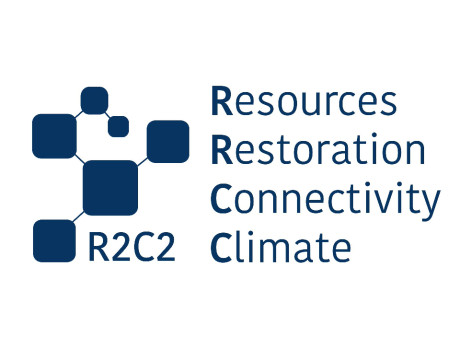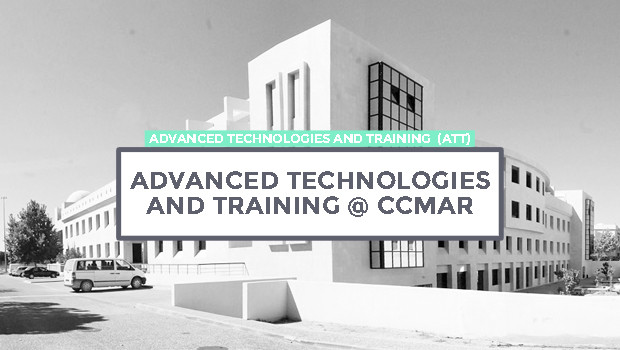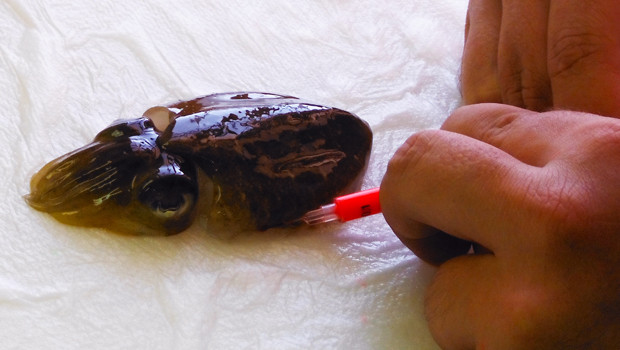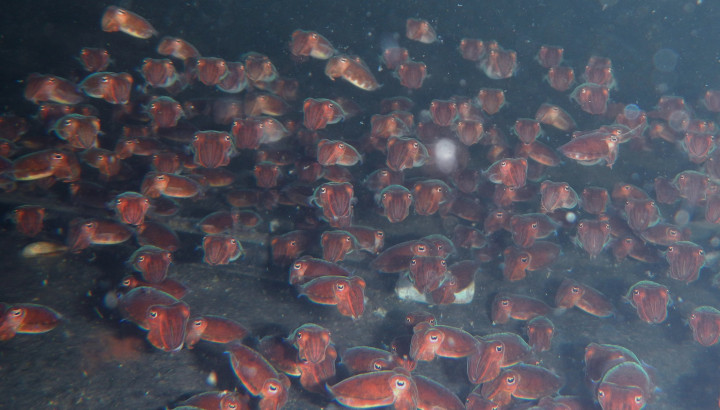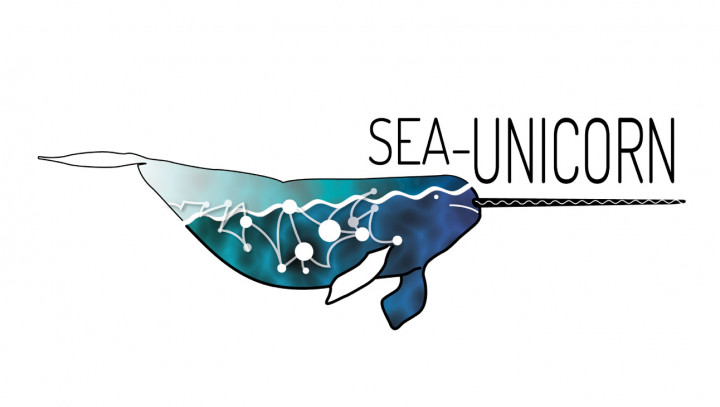|
Zieritz A, Sousa R, Aldridge DC, et al. A global synthesis of ecosystem services provided and disrupted by freshwater bivalve molluscs. Biological Reviews. 2022;97(5):1967 - 1998. doi:10.1111/brv.v97.510.1111/brv.12878 |
|
Rodríguez‐Solana R, Esteves E, Mansinhos I, et al. Influence of elaboration process on chemical, biological, and sensory characteristics of European pennyroyal liqueurs. Journal of the Science of Food and Agriculture. 2021;101(10):4076 - 4089. doi:10.1002/jsfa.v101.1010.1002/jsfa.11043 |
|
Esteves E, Aníbal J. Sensory evaluation of seafood freshness using the quality index method: A meta-analysis. International Journal of Food Microbiology. 2021;337:108934. doi:10.1016/j.ijfoodmicro.2020.108934 |
|
Esteves E, Guerra L, Aníbal J. Effects of Vacuum and Modified Atmosphere Packaging on the Quality and Shelf-Life of Gray Triggerfish (Balistes capriscus) Fillets. Foods. 2021;10(2):250. doi:10.3390/foods10020250 |
|
Nicastro KR, Assis J, Serrão EA, et al. Congruence between fine-scale genetic breaks and dispersal potential in an estuarine seaweed across multiple transition zonesAbstract. Kaplan D, ed. ICES Journal of Marine Science. 2019;77(1):371 - 378. doi:10.1093/icesjms/fsz179 |
|
Esteves E, Aníbal J. Muxama and other traditional food products obtained from tuna in south Portugal and Spain: review and future perspectivesAbstract. Journal of Ethnic Foods. 2019;6(1). doi:10.1186/s42779-019-0022-6 |
|
Esteves E, Lourenço H, Rosa I, Aníbal J. Physicochemical and Microbiological Changes in Dried Small-Spotted Catshark ( Scyliorhynus canicula ): Contributing to the Developing an Alternative Shark-Based Salted-Dried Seafood Product. Journal of Aquatic Food Product Technology. 2018;27(2):176 - 184. doi:10.1080/10498850.2017.1417339 |
|
Panguila EAntónio, de Sousa MInocência, Esteves E, Figueira ACristina. Increaseevaluation Of The Freshness And Shelf-Life Of Fresh And Chilled Mackerel (Scomber Spp.) And Horse Mackerel (Trachurus Spp.), Marketed In Luanda (Angola) And In Faro (Portugal). (Mortal A, Aníbal J, Monteiro J, et al., eds.). Cham: Springer International Publishing; 2018:168 - 181. doi:10.1007/978-3-319-70272-810.1007/978-3-319-70272-8_12 |
|
de Sousa MInocência, Panguila EAntónio, Figueira ACristina, Esteves E. Increasefreshness And Nutritional Composition Of Several Species Of Chilled Seafood Marketed In Luanda (Angola) And In Faro (Portugal). (Mortal A, Aníbal J, Monteiro J, et al., eds.). Cham: Springer International Publishing; 2018:158 - 167. doi:10.1007/978-3-319-70272-8_11 |
|
Esteves E, Aníbal J. Optimization of Processing Conditions of Traditional Cured Tuna Loins–Muxama. Fishes. 2018;3(1):3. doi:10.3390/fishes3010003 |
|
Graça A, Esteves E, Nunes C, Abadias M, Quintas C. Microbiological quality and safety of minimally processed fruits in the marketplace of southern Portugal. Food Control. 2017;73(Part B). doi:10.1016/j.foodcont.2016.09.046 |
|
Palma J, Andrade JP, Bureau DP. The impact of dietary supplementation with astaxanthin on egg quality and growth of long snout seahorse ( Hippocampus guttulatus ) juveniles. Aquaculture Nutrition. 2016:n/a - n/a. doi:10.1111/anu.12394 |
|
Correia M, Palma J, Andrade JP. Growth performance of the early life stages of broad-nosed pipefish, Syngnathus typhle (L.) fed different live or frozen diets. Aquaculture Research. 2016;47(5):1652 - 1660. doi:10.1111/are.12635 |
|
Zardi GI, Nicastro KR, McQuaid CD, Ng TPT, Lathlean J, Seuront L. Enemies with benefits: parasitic endoliths protect mussels against heat stress. Sci Rep. 2016;6:31413. doi:10.1038/srep31413 |
|
Lathlean JA, Seuront L, McQuaid CD, Ng TPT, Zardi GI, Nicastro KR. Cheating the Locals: Invasive Mussels Steal and Benefit from the Cooling Effect of Indigenous Mussels. PLoS One. 2016;11(3):e0152556. doi:10.1371/journal.pone.0152556 |
|
Genç IY, Esteves E, Diler A. Handbook Of Seafood: Quality And Safety Maintenance And Applications. New York: Nova Science Publishers Inc.; 2016. |
|
Genç İYüksel, Esteves E, Diler A. Handbook Of Seafood: Quality And Safety Maintenance And Applications. New York: Nova Science Publishers Inc.; 2016. |
|
Correia M, Koldewey H, Andrade JP, Palma J. A novel underwater visual census: seahorse population survey as a case study. Regional Studies in Marine Science. 2016;8(3). doi:10.1016/j.rsma.2015.10.003 |
|
Assis J, Zupan M, Nicastro KR, Zardi GI, McQuaid CD, Serrão EA. Oceanographic Conditions Limit the Spread of a Marine Invader along Southern African Shores. PLoS One. 2015;10(6):e0128124. doi:10.1371/journal.pone.0128124 |
|
Genç İYüksel, Esteves E, Aníbal J, Diller A. Effects of different thawing methods on the quality of meagre fillets. Ankara Üniversitesi Veteriner Fakültesi Dergisi. 2015;62(2):153 - 159. doi:10.1501/Vetfak_0000002673 |
|
Alves M, Esteves E, Quintas C. Effect of preservatives and acidifying agents on the shelf life of packed cracked green table olives from Maçanilha cultivar. Food Packaging and Shelf Life. 2015;5:32 - 40. doi:10.1016/j.fpsl.2015.05.001 |
|
Zardi GI, Nicastro KR, McQuaid CD, et al. Intraspecific genetic lineages of a marine mussel show behavioural divergence and spatial segregation over a tropical/subtropical biogeographic transition. BMC Evolutionary Biology. 2015;15(1). doi:10.1186/s12862-015-0366-5 |
|
Oliveira AR, Sykes AV, Hachero-Cruzado I, Azeiteiro UM, Esteves E. A sensory and nutritional comparison of mussels (Mytilus sp.) produced in NW Iberia and in the Armona offshore production area (Algarve, Portugal). Food Chem. 2015;168:520-8. doi:10.1016/j.foodchem.2014.07.082 |
|
Zardi GI, Nicastro KR, McQuaid CD, et al. Intraspecific genetic lineages of a marine mussel show behavioural divergence and spatial segregation over a tropical/subtropical biogeographic transition. BMC Evol Biol. 2015;15:100. doi:10.1186/s12862-015-0366-5 |
|
Graça A, Santo D, Esteves E, Nunes C, Abadias M, Quintas C. Evaluation of microbial quality and yeast diversity in fresh-cut apple. Food Microbiol. 2015;51:179-85. doi:10.1016/j.fm.2015.06.003 |
|
Graça A, Santo D, Esteves E, Nunes C, Abadias M, Quintas C. Evaluation of microbial quality and yeast diversity in fresh-cut apple. Food Microbiology. 2015;51:179 - 185. doi:10.1016/j.fm.2015.06.003 |
|
Correia M, Koldewey H, Andrade JP, Palma J. Effects of artificial holdfast units on seahorse density in the Ria Formosa lagoon, Portugal. Journal of Experimental Marine Biology and Ecology. 2015;471:1 - 7. doi:10.1016/j.jembe.2015.05.012 |
|
Correia M, Caldwell IR, Koldewey HJ, Andrade JP, Palma J. Seahorse (Hippocampinae) population fluctuations in the Ria Formosa Lagoon, south Portugal. Journal of Fish Biology. 2015;87(3):679 - 690. doi:10.1111/jfb.12748 |
|
Palma J, Bureau DP, Andrade JP. The effect of diet on ontogenic development of the digestive tract in juvenile reared long snout seahorse Hippocampus guttulatus. Fish Physiol Biochem. 2014;40(3):739-50. doi:10.1007/s10695-013-9881-8 |
|
Aníbal J, Madeira HT, Carvalho LF, Esteves E, Veiga-Pires C, Rocha C. Macroalgae mitigation potential for fish aquaculture effluents: an approach coupling nitrogen uptake and metabolic pathways using Ulva rigida and Enteromorpha clathrata. Environ Sci Pollut Res Int. 2014;21(23):13324-34. doi:10.1007/s11356-013-2427-x |
|
Correia M, Palma J, Koldewey H, Andrade JP. The use of a non-invasive tool for capture-recapture studies on a seahorse Hippocampus guttulatus population. Journal of Fish Biology. 2014;84(4):872 - 884. doi:10.1111/jfb.2014.84.issue-410.1111/jfb.12304 |
|
Cunha RL, Nicastro KR, Costa J, McQuaid CD, Serrão EA, Zardi GI. Wider sampling reveals a non-sister relationship for geographically contiguous lineages of a marine mussel. Ecol Evol. 2014;4(11):2070-81. doi:10.1002/ece3.1033 |
|
Genç İYüksel, Esteves E, Aníbal J, Diler A. Effects of chilled storage on quality of vacuum packed meagre fillets. Journal of Food Engineering. 2013;115(4):486 - 494. doi:10.1016/j.jfoodeng.2012.09.007 |
|
Correia M, Palma J, Koldewey H, Andrade JP. Can artificial holdfast units work as a habitat restoration tool for long-snouted seahorse (Hippocampus guttulatus Cuvier)?. Journal of Experimental Marine Biology and Ecology. 2013;448:258 - 264. doi:10.1016/j.jembe.2013.08.001 |
|
Nicastro KR, Zardi GI, Teixeira S, Neiva J, Serrão EA, Pearson GA. Shift happens: trailing edge contraction associated with recent warming trends threatens a distinct genetic lineage in the marine macroalga Fucus vesiculosus. BMC Biol. 2013;11:6. doi:10.1186/1741-7007-11-6 |
|
Coelho NC, Zardi GI, Pearson GA, Serrão EA, Nicastro KR. Characterization of ten highly polymorphic microsatellite loci for the intertidal mussel Perna perna, and cross species amplification within the genus. BMC Res Notes. 2012;5:558. doi:10.1186/1756-0500-5-558 |
|
Nicastro KR, Zardi GI, McQuaid CD, Pearson GA, Serrão EA. Love thy neighbour: group properties of gaping behaviour in mussel aggregations. PLoS One. 2012;7(10):e47382. doi:10.1371/journal.pone.0047382 |
|
Aníbal J, Esteves E, Rocha C. Seasonal Variations in Gross Biochemical Composition, Percent Edibility, and Condition Index of the Clam Ruditapes decussatus Cultivated in the Ria Formosa (South Portugal). Journal of Shellfish Research. 2011;30(1):17 - 23. doi:10.2983/035.030.0104 |
|
Caldwell IR, Correia M, Palma J, Vincent ACJ. Advances in tagging syngnathids, with the effects of dummy tags on behaviour of Hippocampus guttulatus. Journal of Fish Biology. 2011;78(6):1769 - 1785. doi:10.1111/jfb.2011.78.issue-610.1111/j.1095-8649.2011.02983.x |
|
Zardi GI, Nicastro KR, McQuaid CD, Hancke L, Helmuth B. The combination of selection and dispersal helps explain genetic structure in intertidal mussels. Oecologia. 2011;165(4):947-58. doi:10.1007/s00442-010-1788-9 |
|
Zardi GI, Nicastro KR, Cánovas F, Costa JFerreira, Serrão EA, Pearson GA. Adaptive traits are maintained on steep selective gradients despite gene flow and hybridization in the intertidal zone. PLoS One. 2011;6(6):e19402. doi:10.1371/journal.pone.0019402 |
|
Nicastro KR, Zardi GI, McQuaid CD, Stephens L, Radloff S, Blatch GL. The role of gaping behaviour in habitat partitioning between coexisting intertidal mussels. BMC Ecol. 2010;10:17. doi:10.1186/1472-6785-10-17 |
|
Esteves E, Pina T, Andrade JP. Diel and seasonal changes in nutritional condition of the anadromous twaite shad Alosa fallax fallax (Lacépède, 1803) larvae. Ecology of Freshwater Fish. 2009;18(1):132 - 144. doi:10.1111/eff.2009.18.issue-110.1111/j.1600-0633.2008.00332.x |
|
Zardi GI, Nicastro KR, McQuaid CDavid, Gektidis M. Effects of endolithic parasitism on invasive and indigenous mussels in a variable physical environment. PLoS One. 2009;4(8):e6560. doi:10.1371/journal.pone.0006560 |
|
Palma J, Bureau DP, Correia M, Andrade JP. Effects of temperature, density and early weaning on the survival and growth of Atlantic ditch shrimp Palaemonetes varians larvae. Aquaculture Research. 2009;40(13):1468 - 1473. doi:10.1111/j.1365-2109.2009.02245.x |
|
Palma J, Correia M, Andrade JP. Usefulness of flat bottom tanks on the settlement of spider crab (Maja squinado, Herbst) larvae. Aquaculture Research. 2008;39(9):1005 - 1008. doi:10.1111/j.1365-2109.2008.01943.x |
|
Correia M, Palma J, Kirakowski T, Andrade JP. Effects of prey nutritional quality on the growth and survival of juvenile cuttlefish, Sepia officinalis (Linnaeus, 1758). Aquaculture Research. 2008;39(8):869 - 876. doi:10.1111/j.1365-2109.2008.01940.x |
|
Correia M, Palma J, Andrade JP. Effects of live prey availability on growth and survival in the early stages of cuttlefish Sepia officinalis (Linnaeus, 1758) life cycle. Aquaculture Research. 2008;39(1):33 - 40. doi:10.1111/are.2008.39.issue-110.1111/j.1365-2109.2007.01858.x |
|
Palma J, Stockdale J, Correia M, Andrade JP. Growth and survival of adult long snout seahorse (Hippocampus guttulatus) using frozen diets. Aquaculture. 2008;278(1-4):55 - 59. doi:10.1016/j.aquaculture.2008.03.019 |
|
Esteves E, Andrade JPedro. Diel and seasonal distribution patterns of eggs, embryos and larvae of Twaite shad Alosa fallax fallax (Lacépède, 1803) in a lowland tidal river. Acta Oecologica. 2008;34(2):172 - 185. doi:10.1016/j.actao.2008.05.008 |
|
Bargelloni L, Alarcon JA, Alvarez MC, et al. The Atlantic-Mediterranean transition: discordant genetic patterns in two seabream species, Diplodus puntazzo (Cetti) and Diplodus sargus (L.). Mol Phylogenet Evol. 2005;36(3):523-35. doi:10.1016/j.ympev.2005.04.017 |
|
Chícharo A, Esteves E, A Santos MP, Santos Ados, Peliz Á, Ré P. Are sardine larvae caught off northern Portugal in winter starving? An approach examining nutritional conditions. Marine Ecology Progress Series. 2003;257:303–309. |
|
Pina T, Esteves E, Andrade JPedro. Gross and histological observations of ovarian development in twaite shad, Alosa fallax fallax, from Rivers Mira and Guadiana (Portugal). Scientia Marina. 2003;67(3):313 - 322. doi:10.3989/scimar.2003.67n310.3989/scimar.2003.67n3313 |
|
Chícharo A, Chícharo LM, Galvão H, et al. Status of the Guadiana Estuary (south Portugal) during 1996-1998: An ecohydrological approach. Aquatic Ecosystem Health & Management. 2001;4(1):73 - 89. doi:10.1080/146349801753569298 |
|
Chícharo L, Chícharo A, Esteves E, Andrade JPedro, Morais P. Effects of alterations in fresh water supply on the abundance and distribution of Engraulis encrasicolus in the Guadiana estuary and adjacent coastal areas of south Portugal. International Journal of Ecohydrology & Hydrobiology. 2001;1:341–346. |
|
Esteves E, Chícharo A, Pina T, Coelho ML, Andrade JP. Comparison of RNA/DNA ratios obtained with two methods for nucleic acid quantification in gobiid larvae. Journal of Experimental Marine Biology and Ecology. 2000;245(1):43 - 55. doi:10.1016/S0022-0981(99)00150-1 |
|
Esteves E, Pina T, Chícharo A, Andrade JP. The distribution of estuarine fish larvae: Nutritional condition andco-occurrence with predators and prey. Acta Oecologica. 2000;21(3):161 - 173. doi:10.1016/S1146-609X(00)01078-X |
|
Aníbal J, Esteves E, Krug H, Da Silva HMarques. Age and growth in the Alfonsino, Beryx splendens (Berycidae) from the Azores (central eastern Atlantic). Italian Journal of Zoology. 1998;65(sup1):215 - 218. doi:10.1080/11250009809386816 |
|
Esteves E, Aníbal J, Krug H, Silva HM. Aspects of age and growth of bluemouth, Helicolenus dactylopterus dactylopterus (Delaroche, 1809) from the Azores. ARQUIPÉLAGO. Ciências Biológicas e Marinhas= Life and Marine Sciences. 1997;15:83–95. |
|
Esteves E, Simões P, Silva HM, Andrade JP. Ageing of swordfish, Xiphias gladius Linnaeus, 1758, from the Azores, using sagittae, anal-fin spines and vertebrae. ARQUIPÉLAGO. Ciências Biológicas e Marinhas= Life and Marine Sciences. 1995;13:39–51. |
